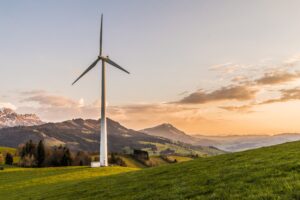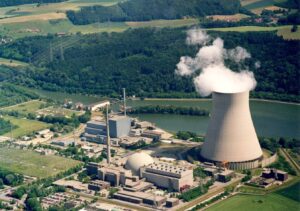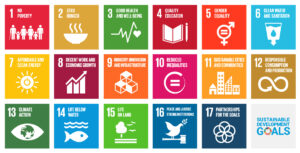Germany’s climate targets are only about a decade away from being met.
By Audra Grigus

Germany is often associated with sustainability and being a “green” country, and for good reason!
- Its public transportation system is easy to use and accessible.
- Biking is an easy and normalized form of transportation.
- Most cities have an abundance of green spaces.
- The waste sorting system is impressive and effective (just don’t mess it up!).
- Around 40% of the country’s energy production is renewable energy.
- Berlin Fashion Week has been the hub for innovative sustainable fashion for over a decade.
While its efforts toward a green future are noble and should be admired, Germany still ranks as the number one producer of CO2 emissions in Europe. Germany’s output of 604.8 million metric tons in 2020 may seem like a lot, but it is actually 8% less than what was produced in 2019. However, emissions did pick up again in 2021 after the COVID-19 related dip.
According to the Fraunhofer Institute, 46% of electricity generated in 2021 came from renewable energy sources. Solar and wind power sources have been a main focus—in fact, the city of Freiburg produces the same amount of solar power as the UK. Outside of renewable energy, 41% of electricity was generated by coal, natural gas, and fossil fuels, and the other 13% came from nuclear power.

By the end of 2022, Germany intends to shut down its remaining three nuclear power plants, Emsland, Isar and Neckarwestheim, as part of their initiatives to move toward renewable energy use.
After missing its climate target for 2021, and the prediction that it will likely not meet the 2022 target, the new Bundestag is working harder to meet the goals of reducing Germany’s greenhouse gas (GHG) emissions by at least 65% by 2030 and use only renewable energy by 2035.
Germany’s sustainability policies today are heavily guided by the United Nations Sustainable Development Goals (SDGs).

For those unfamiliar, the SDGs are an urgent call to action for peace and prosperity for people and the planet, now and into the future. The Germanic-American Institute also uses the SDGs as a guideline for the advocacy work that we do.
Germany is focusing on work in 6 main areas that utilize most of the SDGs:
- Human well-being and capabilities, social justice (SDGs 3, 4, 5, 8, 9, 10)
- Climate action and energy transition (SDGs 7, 13)
- Circular economy (SDGs 8, 9, 12)
- Sustainable building and transport (SDGs 7, 8, 9, 11, 12, 13)
- Sustainable agricultural and food systems (SDGs 2, 3, 8, 12, 13)
- A pollutant-free environment (SDGs 6, 8, 9, 14, 15)
Germany has much work to do in order to meet its environmental targets, but thankfully the strategic implementation of the SDGs and focus on renewable energy have proven fruitful thus far. German GHG emissions have decreased by 40.8% since 1990, a motivating sign of the green future that is to come.